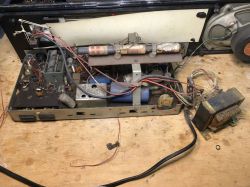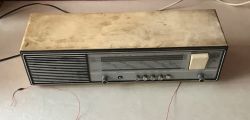 .
.I would like to invite you to another topic about an old Polish radio receiver, this time about a Ludwik from the 1970s, characterised by a large rocker On/Off button on the right side of the front of the case. This receiver allows you to listen to four ranges, standard long wave, medium wave, short wave and ultra short wave, whereby to listen to something in our time you would have to tune out the UKF, but to start with a look at the casing:
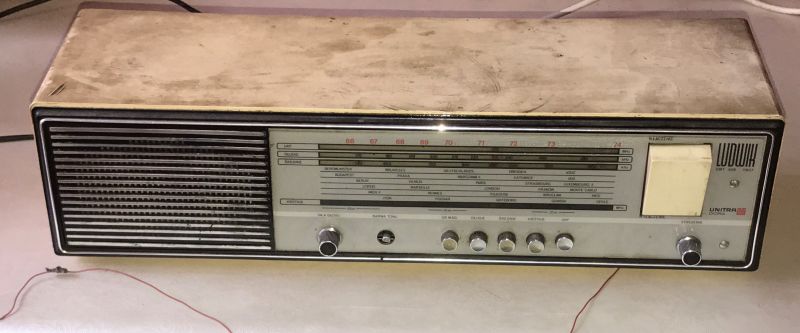 .
.
On the front, in addition to the range selector and volume control, we also have a tone knob and the option to switch to the tape deck connector.
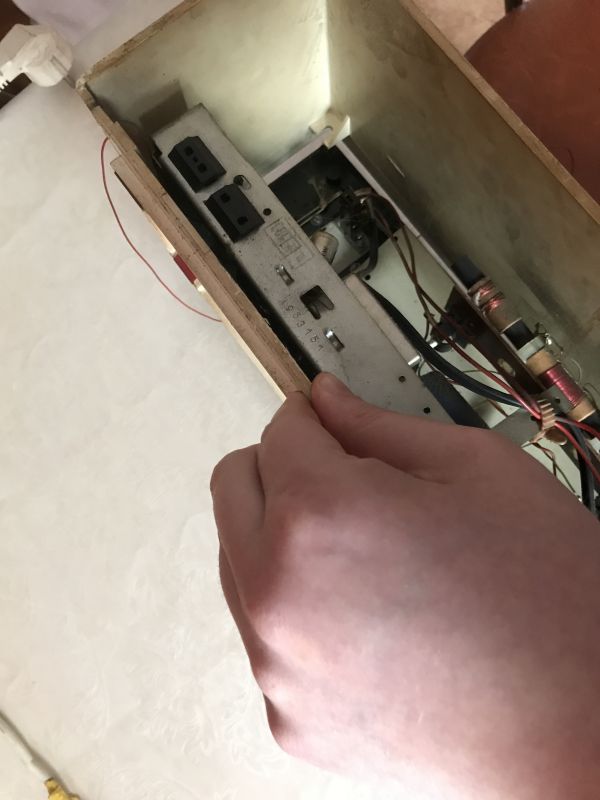 .
.On the back we have a cassette connector, a connector for the aerial, in my case unfortunately the back cover is missing.
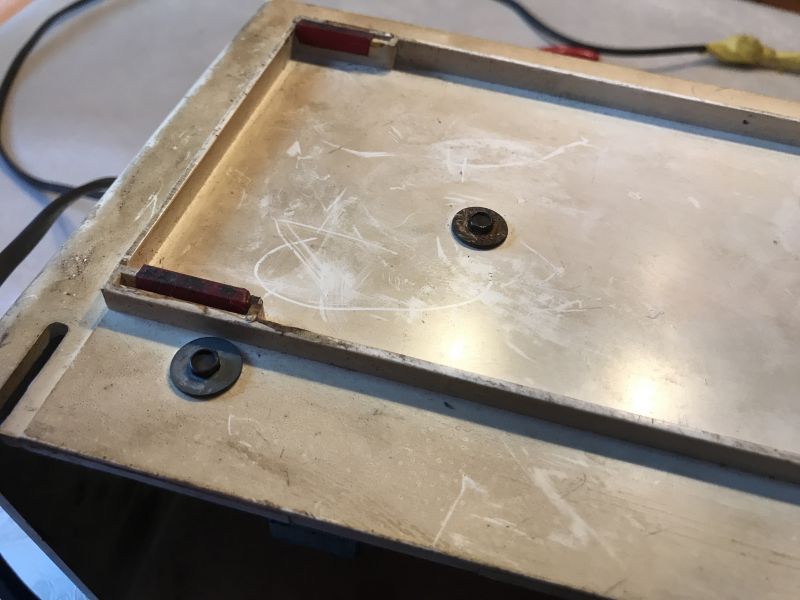
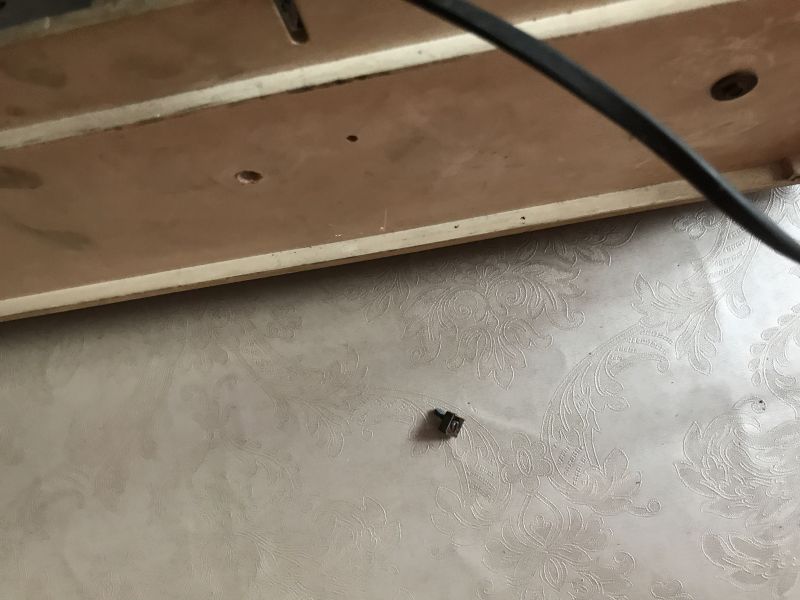 .
.After freeing the PCB and separately the mains transformer, the front with the electronics can be slid out.
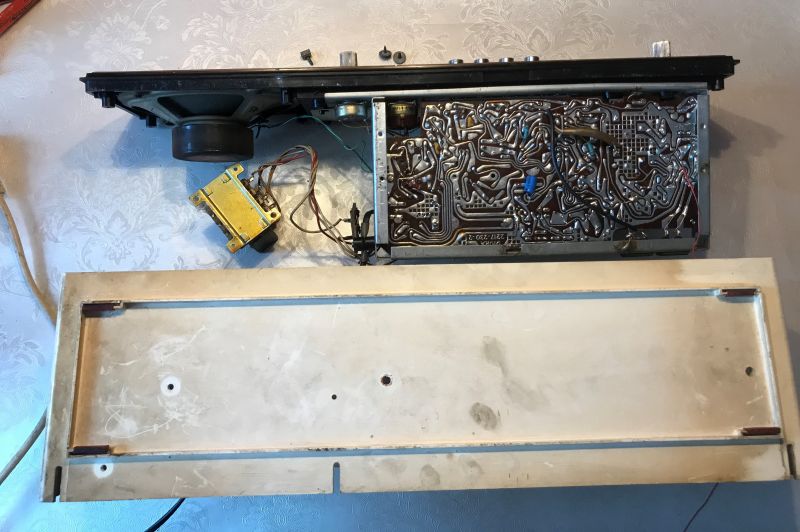
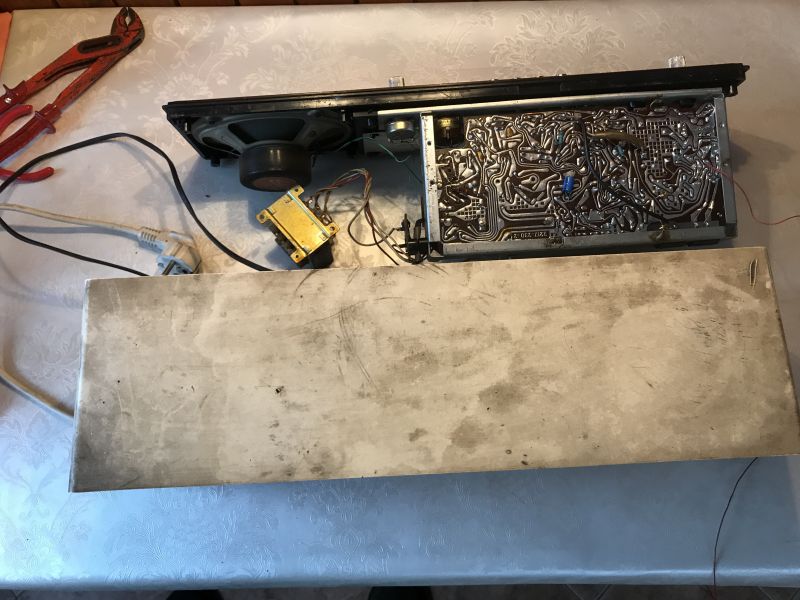
The plate is characteristic of the time, single layer, the tracks still guided by hand:
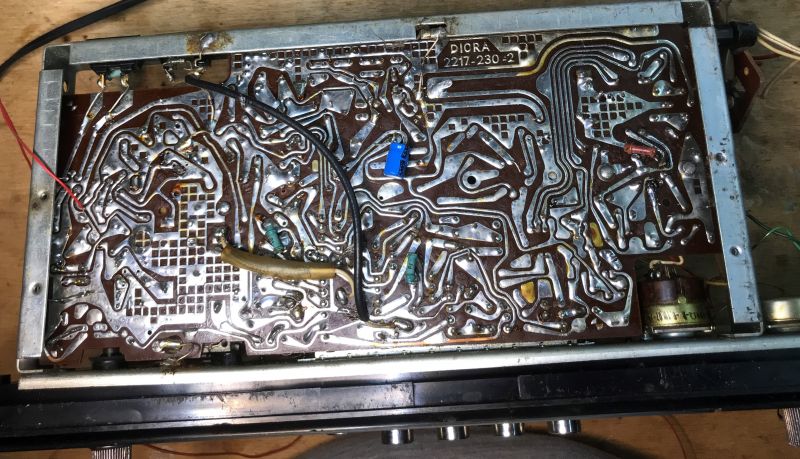 .
.These individual components mounted on the underside are, I don't know at the moment whether this is the user's invention or whether it was manufactured as such?
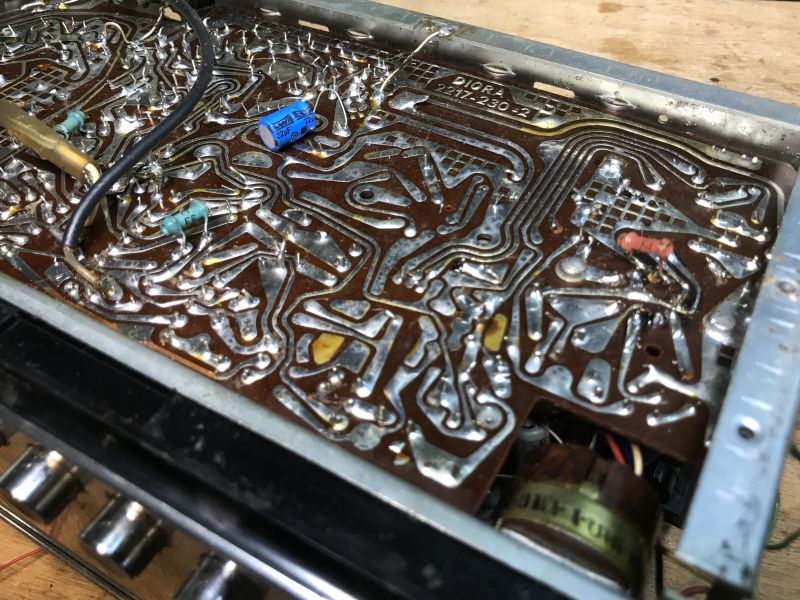
The transformer is an ordinary 50Hz mains transformer, Unitra Zatra:
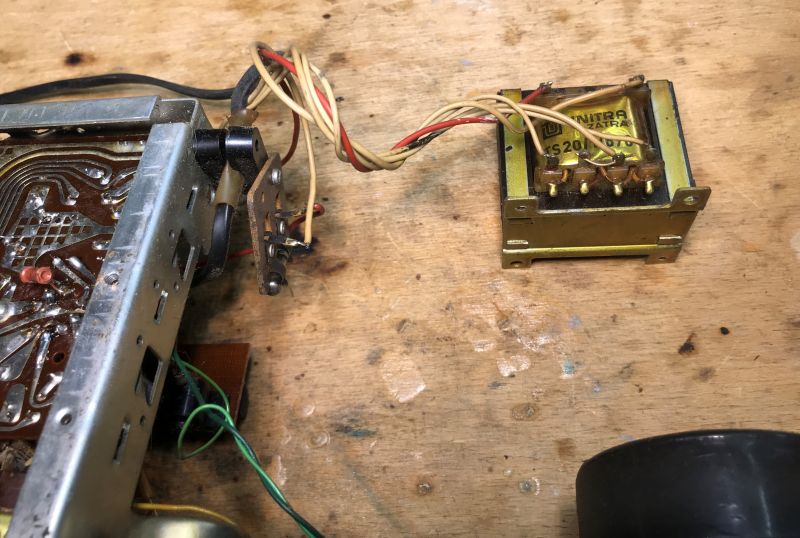 .
.The ferrite antenna is conspicuous inside, and there are traces of tampering:
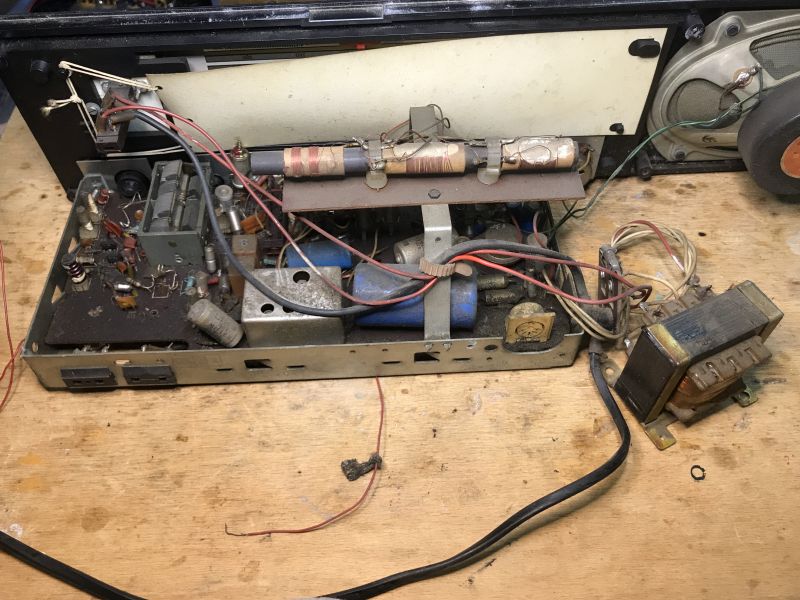
Here you can see the adjustable capacitor, it is the one that implements the tuning by changing the capacitance.
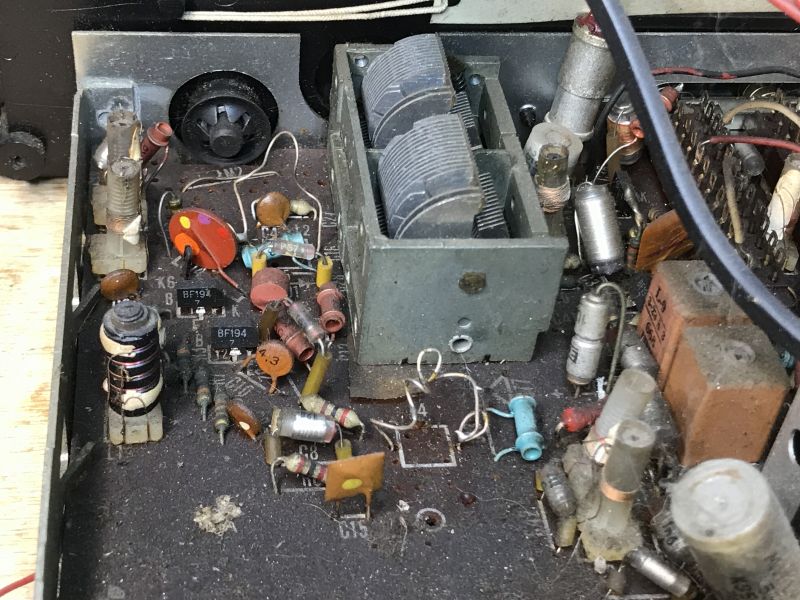
Someone must have made an attempt at tuning, with better or worse results.
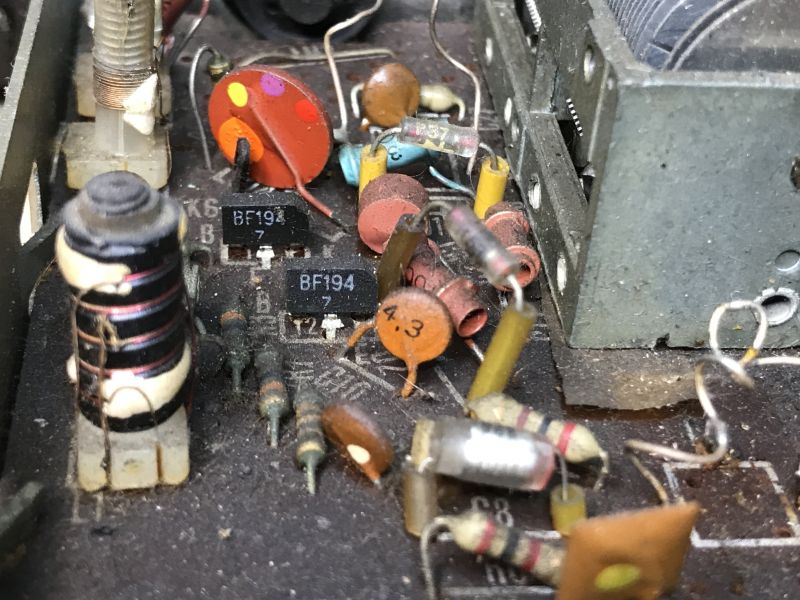
The photo above shows two low-power, high-frequency BF194 silicon transistors typical of the time:
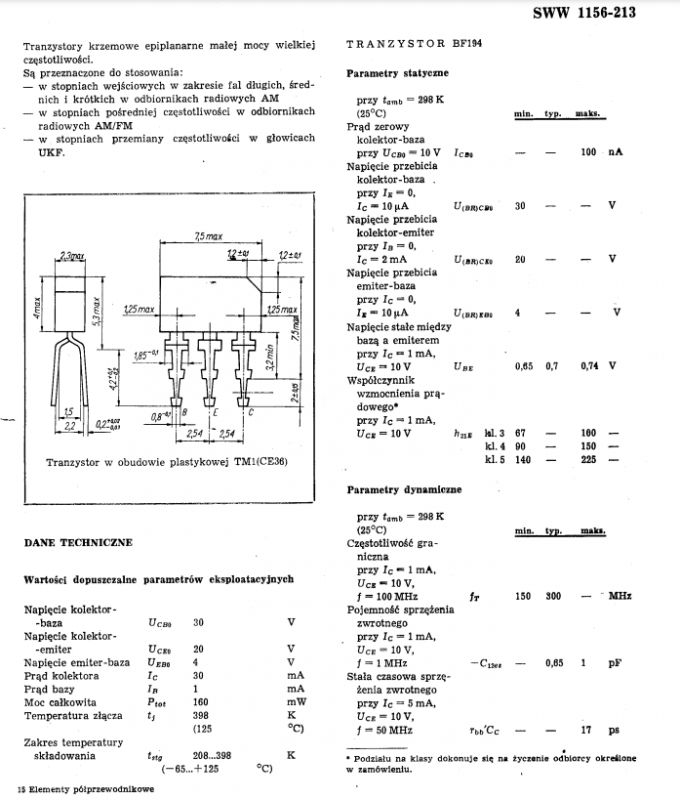 .
.Miflex capacitor, with the results of someone else's games in the background:
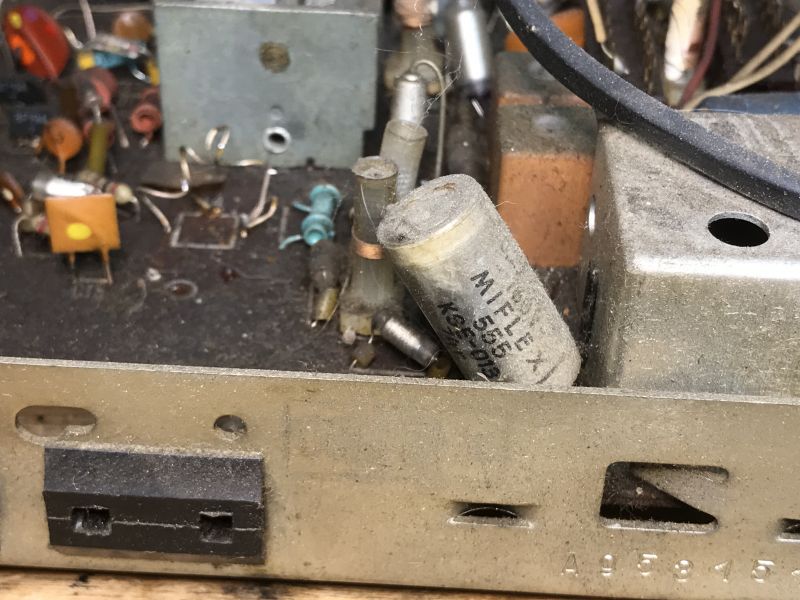
Coupled Isostat switches:

Below the UL1402 circuit:
 .
.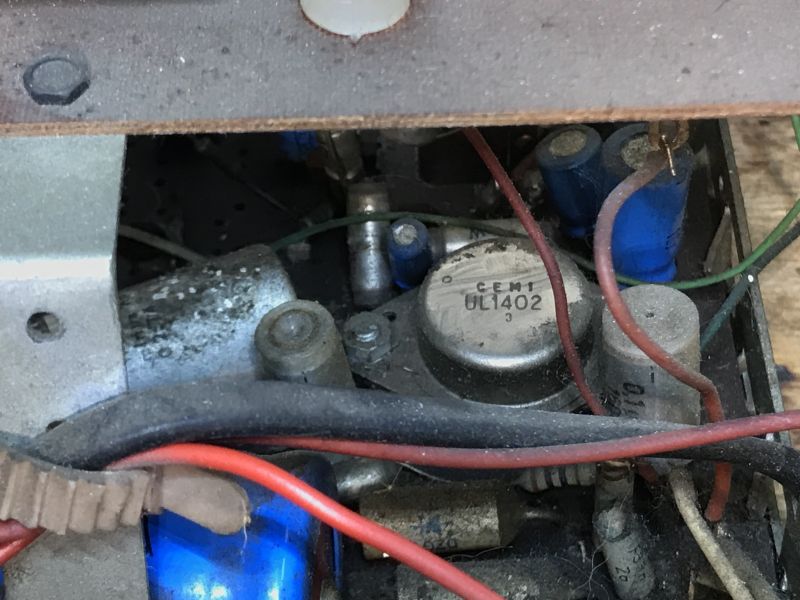 .
.The UL1402 is a low power amplifier:
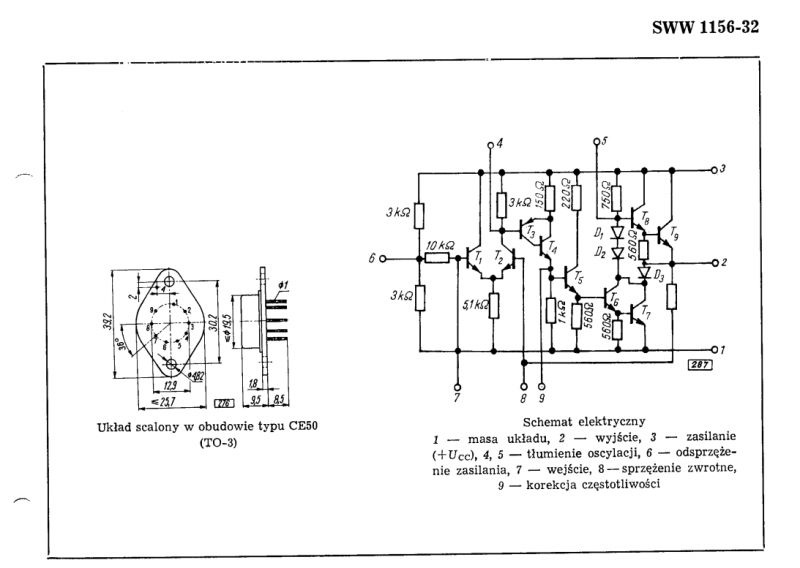
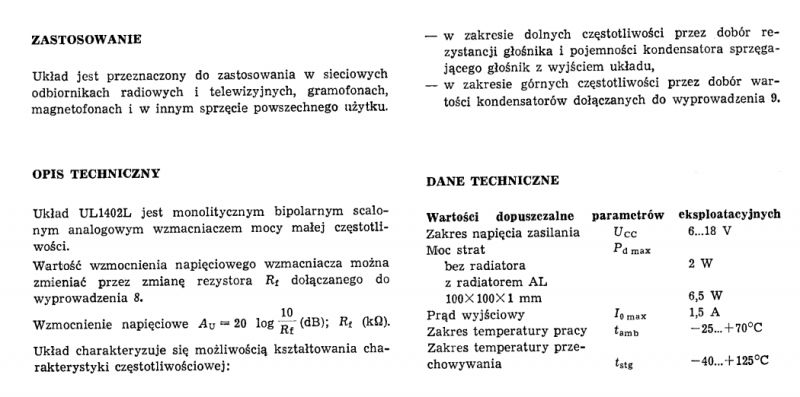 .
.Telpod 10 kΩ 0.1 W potentiometer:

Below, a speaker with the proud inscription Unitra - Made in Poland:
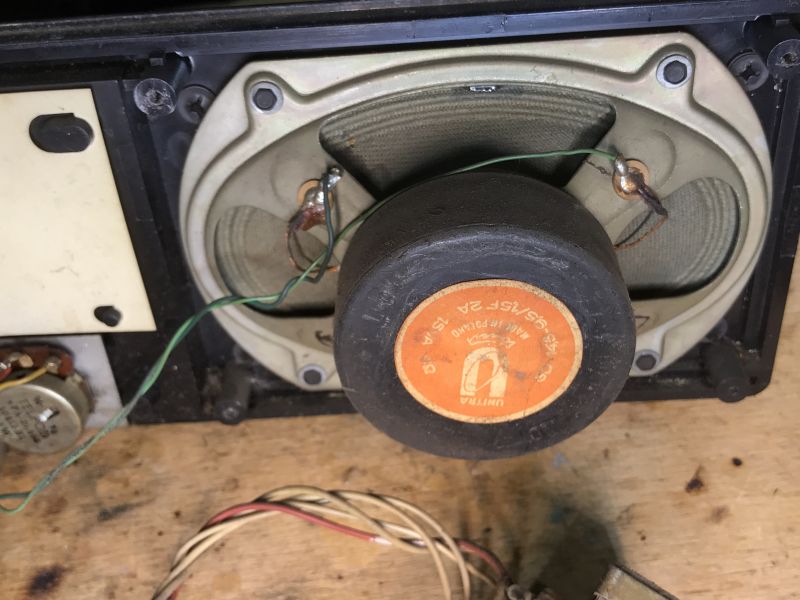 .
.Shielded part of the circuit:
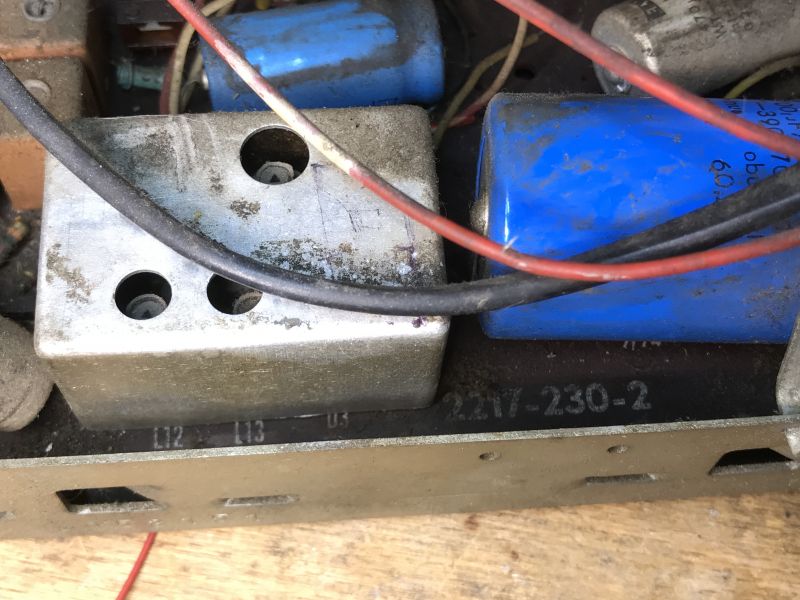 .
.And the connectors:
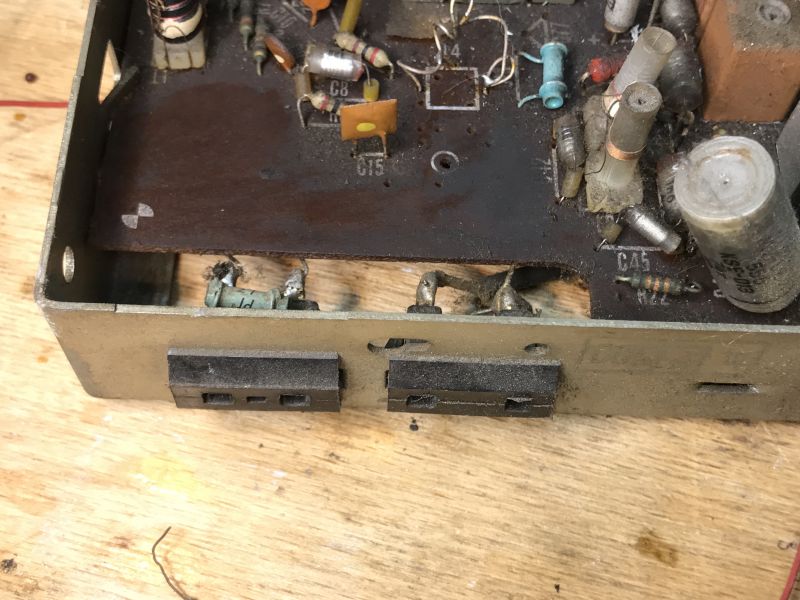 .
.Finally, a diagram:
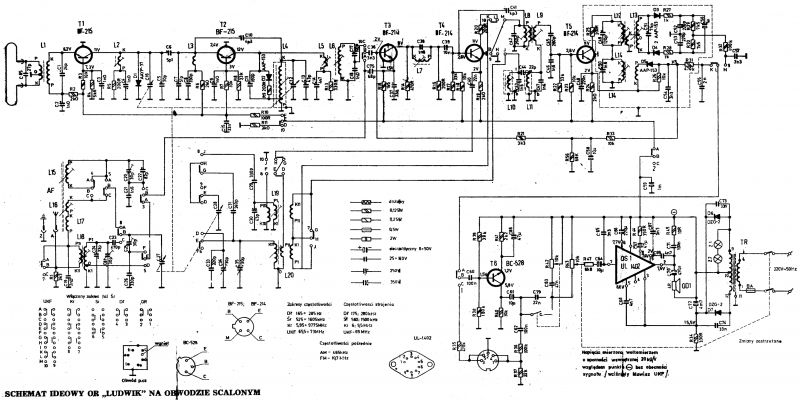 .
.The diagram above shows the Ludwig DMT-408 (1974), where the m.c. amplifier is based on the UL1402. There was also an earlier version, the DMT-405, where this was implemented on transistors (1972).
Summary .
It's a wonder I didn't know of the existence of this Unitra receiver before. Its unusual style really catches the eye. I wonder what it looked like in its heyday, in its "natural" environment. I simply have no way of remembering it myself, I can only know it from stories. It's a pity that it has already been hit without the back panel. From what I've seen in pictures online, this panel is also pure retro.
Does anyone have this type of receiver in their collection as well? Feel free to comment and post photos of your specimens.
Cool? Ranking DIY Helpful post? Buy me a coffee.







